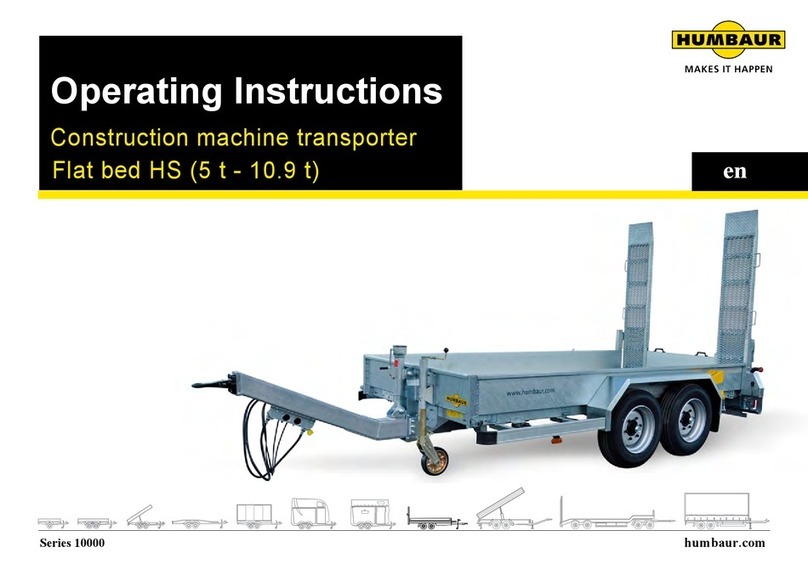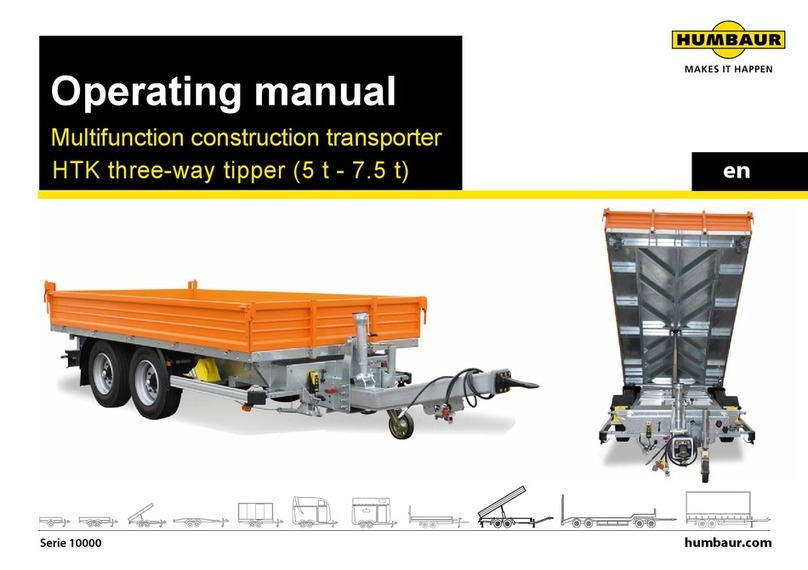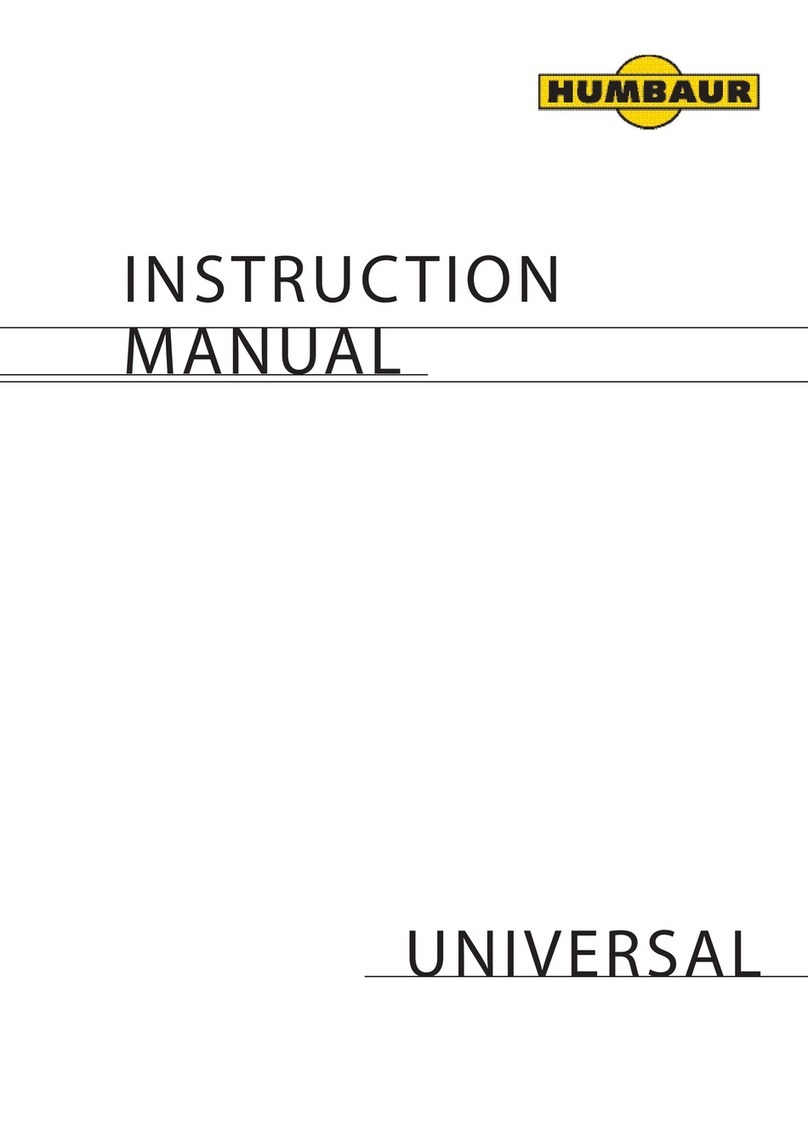
12
Safety
Use
1
Intended use
HUMBAUR vehicles and bodies are
constructed in accordance with the
technological regulations and the
recognised safety regulations. Despite
this, however, if used for other than their
intended purpose, they can pose a
hazard to life and limb for both users and
third parties, or cause damage either to
the HUMBAUR vehicle itself or to other
property.
HUMBAUR vehicles and bodies are
manufactured exclusively for transport
operations in accordance with all
relevant regulations and provisions.
Proper use entails adherence to
regulations, descriptions and instructions
provided in this manual and the
suppliers' operating and maintenance
manuals.
If you are planning to make subsequent
modifications to your HUMBAUR vehicle
or vehicle body, place an enquiry with
Humbaur GmbH in good time.
Always check with Humbaur GmbH an
approved HUMBAUR workshop before
having accessories fitted to your
HUMBAUR vehicle or body.
The following is permitted:
– Transport of goods
– Operation only in the range of the
total permitted payload
– Operation only with suitable towing
vehicle and approved coupling
– Operation only in when in technically
perfect condition
– Operation with uniform weight
distribution of the load
– Driving only with properly secured
load
– Driving only when in compliance with
maximum legal speed and speed
adjusted to poor road and weather
conditions
– Loading and unloading only in secure
areas or with additional safeguards in
public streets
– Only stop/park the trailer with
safeguards to prevent rolling away
Periodically subjecting the trailer to the
general inspection and safety inspection
by specialists as well as the certification
of this is a prerequisite to participating in
road transport.
The operator/user of the trailer is
obligated to regularly care for/clean the
trailer as well as perform maintenance.
HUMBAUR vehicles/bodies
carry a VIN (vehicle identification
number), see page 33.
Always quote the VIN when
making enquiries or ordering
parts.































